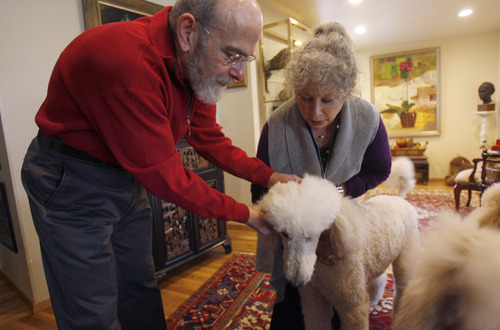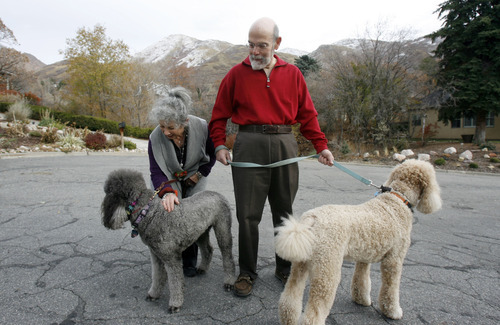This is an archived article that was published on sltrib.com in 2010, and information in the article may be outdated. It is provided only for personal research purposes and may not be reprinted.
Anne and David Dolowitz love to walk. But the Salt Lake City couple, who both have asthma, can forget about it during the winter.
The high levels of pollution during inversions means they wheeze just strolling around their cul-de-sac. Anne says she stocks up on medicine because she needs it when the inversions last for days.
The precautions have kept her out of the hospital.
"The only reason we have not had that contact with the emergency room is we are informed patients. We've had asthma long enough and we know what to do," she said.
Inversion season starts next month — and with it, the spikes in fine particle pollution known as PM2.5 that make breathing difficult for people with asthma. A new analysis by the Utah Department of Health and the Utah Department of Environmental Quality shows the amount of PM2.5 reaches unhealthy levels for sensitive groups during inversions.
During the 2006-07 and 2007-08 winters, the average amount of the particle reached 37.4 micrograms per cubic meter of air during inversions, compared to 13.1 on noninversion days, when the air quality would be considered "good."
There were 35 inversion days in the first winter and 10 in the second winter studied.
The amount of the pollutant, caused by gas emissions, increased with every day of an inversion. By the fifth to seventh day, PM2.5 levels reached an average of 53.1 micrograms per cubic meter of air.
At that level, the air is considered "unhealthy" for everyone, but particularly for people with asthma. The analysis shows they had a 42 percent increased risk of needing emergency help during those inversions.
At the end of prolonged inversions, 10 visits a day were made to Salt Lake County hospitals for asthma — three more than days without inversions.
"It's the prolonged exposure that is causing the difficulty," said Rebecca Jorgensen, with the health department's Utah Asthma Program.
The program recommends that people with asthma check PM2.5 levels during inversions and reduce their exposure to all of their asthma triggers during poor air quality days.
Luckily, weeklong inversions haven't happened very often — about four times in the two winters studied, according to the health department.
The study didn't find an increased risk of hospitalizations during shorter inversions. But that doesn't mean people with asthma breathe much easier.
The study didn't look at whether asthma patients seek more medications or clinic visits during inversions, but doctors at asthma clinics say that happens.
"Patients really are exquisitely sensitive during the inversions," says Amit Shah, a doctor at the Asthma and Allergy Clinic of Utah in Millcreek. "They feel they're really dependent on their [bronchodilator] to get them through those periods."
That is true for Anne Dolowitz, a patient at Shah's clinic.
During the winter, "my nose is good for nothing except hanging glasses on," says the 68-year-old. "I used to do a lot of ice skating. I love walking. That is just absolutely forbidden. My body can't do it."
To check air quality
The state health department's Utah Asthma Program advises those with asthma to check PM2.5 levels during inversions and avoid their asthma triggers on poor air quality days.







